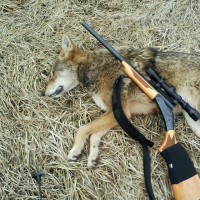I’d add just one thing to the points Randy and Nicholas make above.
I hunt an area that has mostly cattle ranching and dairy farming and nobody who raises cattle likes coyotes. The problem this produces is that coyotes in my area learn real fast that if they get caught out in the open, they get shot at. They already have a level of wariness that is very high.
I’m trying very hard NOT to educate the coyotes in the area any further or to do things that make them even more skittish. So I’m being VERY careful about overcalling in a given area or overlapping so that coyotes potentially hear a call from one place and suddenly they’re hearing another wounded animal calling from 400 yards in the other direction.
Just my opinion, but anything that makes a coyote think “What the…” and potentially arouses their suspicion is a BAD thing. A suspicious coyote is a wary coyote and if you make a coyote even more wary than they already are in my area, that’s doubling down on an already tough situation.
So what that means as far as distance between stands is that sometimes I’m willing to make stands a few hundred yards apart. And sometimes I skip good stands entirely because, let’s say it happens to be very calm day where I think the sound will carry farther than normal and overlap with another stand. So I won’t call from that overlapping stand on that day because of the risk of it seeming suspicious to the coyote.
But on a windy day with lots of “cover” noise, I might call two stands that are only 200-300 yards apart.
The thing, IMO, is just to think about how far can a coyote hear on a given day and plan your stands accordingly. Also, the situation that I want to create as often as possible is that the coyote hears the call, it sounds like free lunch, so they come running in and get whacked. Dead coyotes don’t get any smarter, so I’m trying to call to a given area as little as possible before Mr. Coyote comes out and gets wacked.
Grouse
